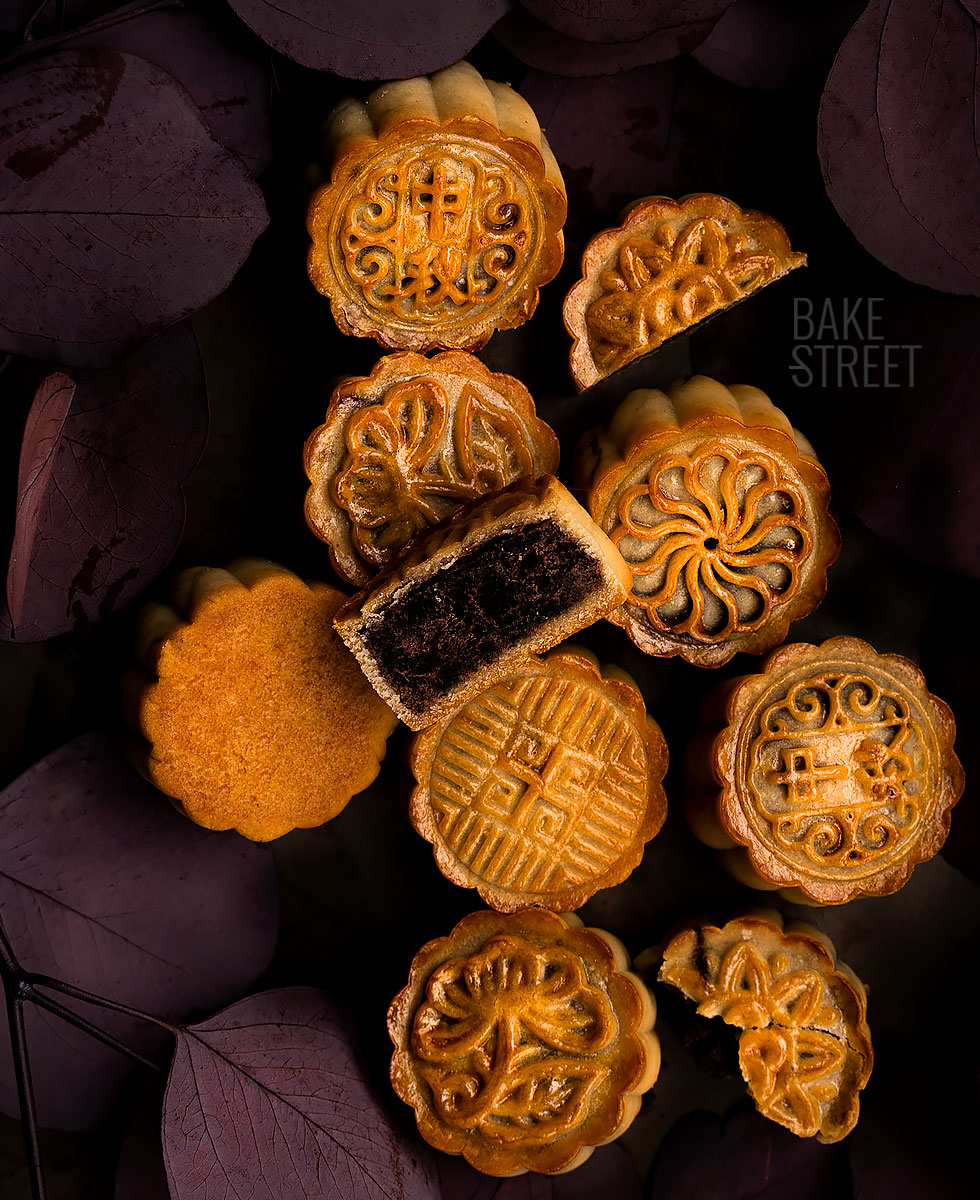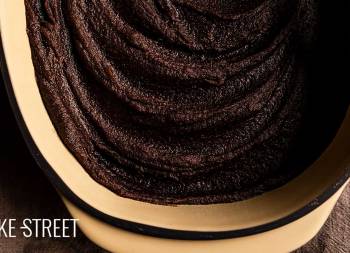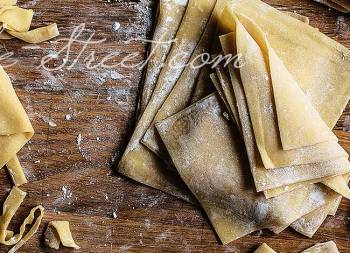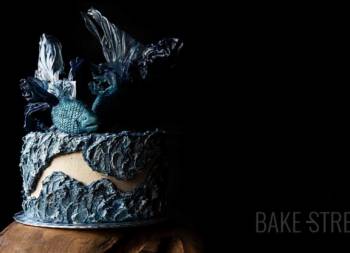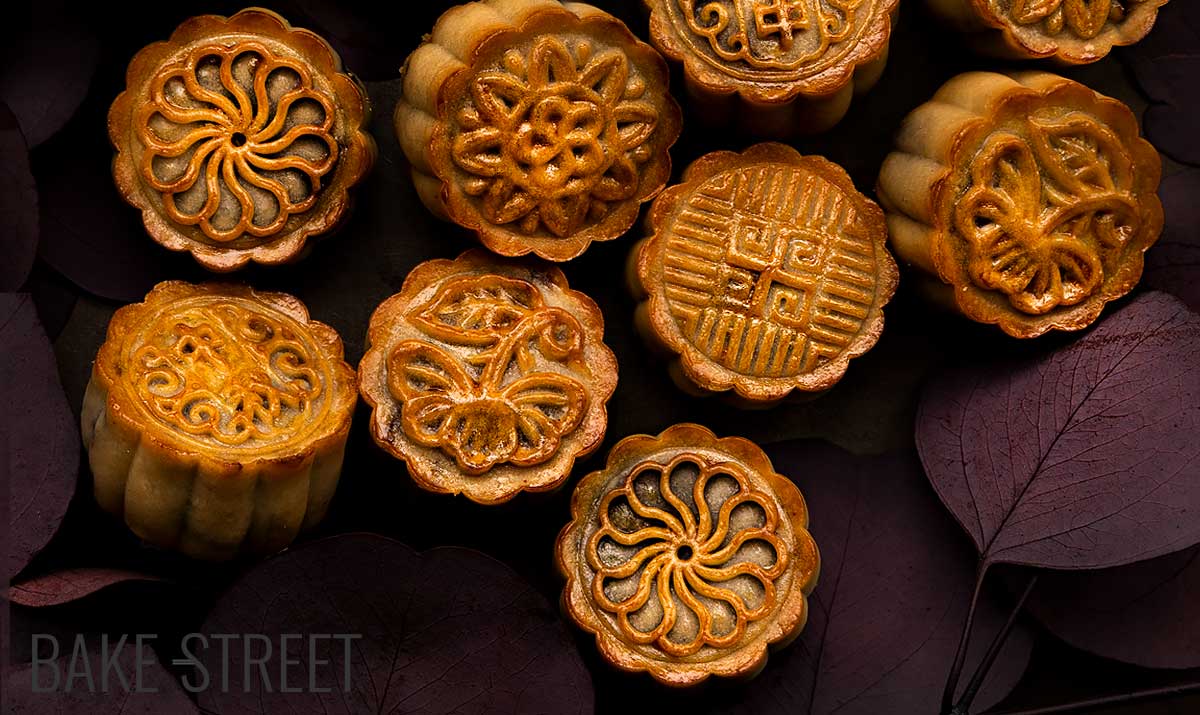
How to make Mooncakes – Red bean paste
A few days ago I told you how to make anko and I mentioned that we would need it for another preparation. The recipe for which it was destined, that wonderful sweet red bean paste, is for these incredible cakes. Today I show you how to make Mooncakes.
If I’m honest, this recipe I had in mind to have left it on the blog last year…. In fact I bought the mold at the beginning of September 2020, but between one thing and another, I missed the date. I was very disappointed because I was really looking forward to making them, but I decided to wait until this year to not make them at a time that did not correspond. I’m also telling you that if I get a little absent-minded, I’ll miss the date this year too… hahaha
There are an infinite number of ways to make them, especially when it comes to filling them. This time I am going to leave you with a very traditional, classic and one of the simplest fillings (as laborious as the anko can be). I recognize that I must practice a little more the shaping, it has its technique (rather skill) to get them right, before trying to make them with fillings that combine salty yolk and sweet pastries or salty fillings.
In addition to looking for some ingredients, because I must admit that no matter how hard I have looked for them, I have not managed to find some of them. But I don’t give up!
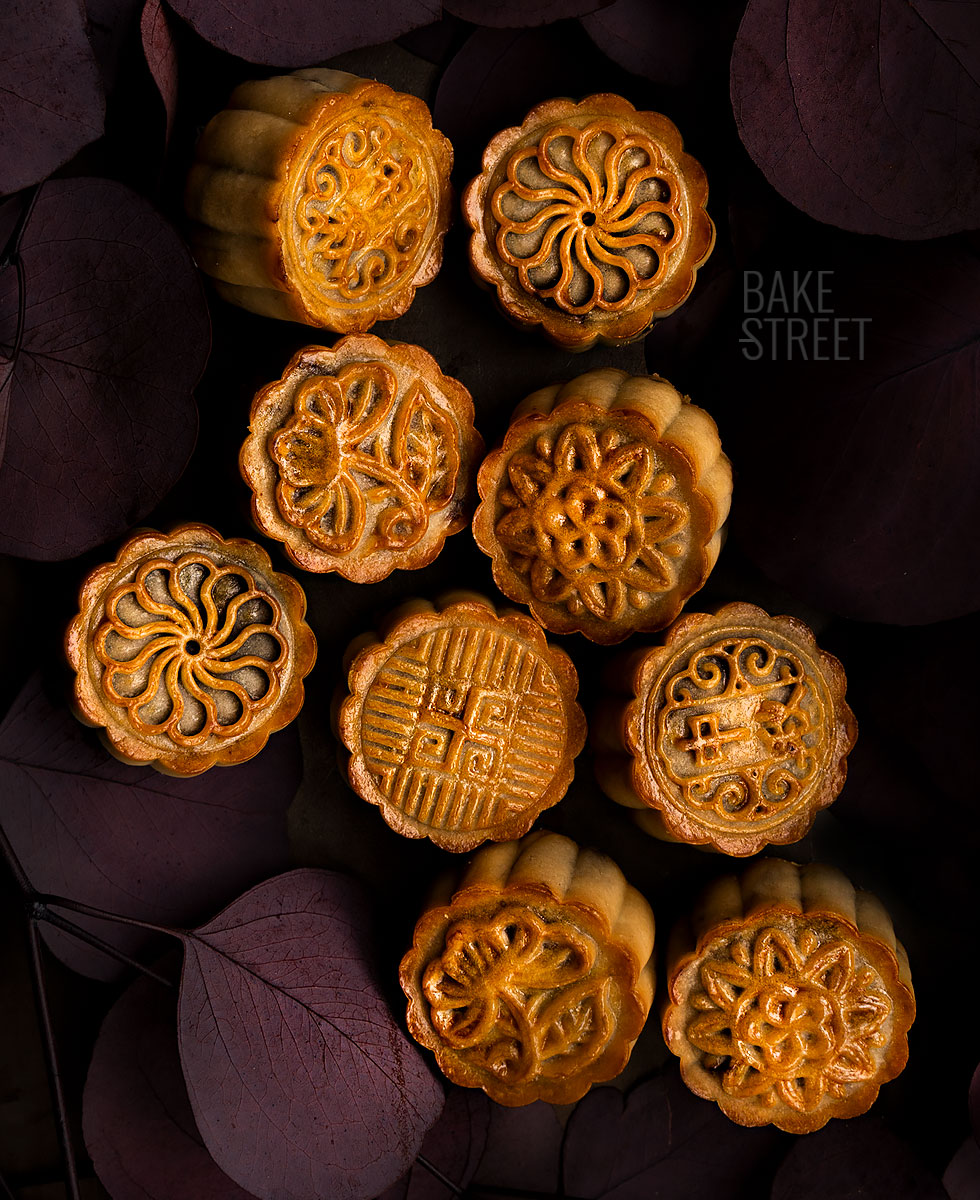
The beginnings…
The custom of offering sacrifices to the moon has its origin in the cult to the moon goddess. Kings offered sacrifices to the moon in autumn during the Western Zhou dynasty (1045 – 770 BC). They believed that this practice would provide them with a bountiful harvest the following year.
The term “Mid-Autumn” first appeared in the book Rites of Zhou (周礼), written in the Warring States period (475 – 221 BC). But at that time the term only referred to the time and season; the festival did not exist at that time.
Mooncake origin.
Mooncake is one of the most appreciated traditional cakes in East and Southeast Asia, as it is synonymous with the Chinese Mid-Autumn Festival. It is a festival that coincides with the full moon, that is, the fifteenth day of the eighth lunar month. In the Gregorian calendar, the date is usually in late September or early October. This year 2021 is celebrated on Tuesday,September 21.
For the Chinese, this holiday is an important and emotional time because it is associated with family reunions, meeting friends and, of course, enjoying a real mooncake feast. Although it is a sweet that can be enjoyed all year round, tasting it on this date can be more attractive if we take into account its traditions or meanings.
Its history dates back more than 1,000 years.
The earliest mention of these mooncakes, known as yue bing (月饼) in Chinese, dates from the Song Dynasty (960-1279). Mooncakes are especially mentioned in Wu Zhimu’s Chronicle of the Southern Song Dynasty (吴自牧).
But, the tradition of using baked cakes as an edible offering to lunar gods and goddesses existed long ago in the Middle Kingdom. During these early centuries, moon cake was given other names such as yue tuan (月团) and xiao bing (小饼).
During the reign of Emperor Xizong of the Tang dynasty (873-888), mooncakes were also given by the court to visiting scholars during the Mid-Autumn Festival. This practice was probably the one that inspired the association of the cake with the festival.
Although the association can be traced back to the Tang dynasty, the practice and tradition of making and eating these mooncakes during the Mid-Autumn Festival began during the Ming dynasty (1368-1644).
During the Ming Dynasty (1368 – 1644 AD) and the Qing Dynasty (1644 – 1912 AD), the Mid-Autumn Festival was as popular as the Chinese New Year. People promoted many different activities to celebrate it such as burning pagodas and performing the fire dragon dance.
With the difference of several centuries between the Tang and Ming dynasties, it is believed that mooncake began to be consumed as an aristocratic luxury before it was adopted and consumed by everyone.
There are many types of mooncake depending on the region.
The most widely sold and consumed Chinese mooncake, also called Cantonese style, is round and has a size of about ten centimeters in diameter and one and a half centimeters thick.
Top crust of Cantonese mooncakes, the thin layer that covers the filling, usually bears auspicious Chinese characters such as “longevity” or “harmony”, although the maker’s name can also be found. The fillings generally consist of a dense paste made with lotus seeds (recipe lotus seed paste), sweet red beans or jujube (fruit of immortality).
It is usual to accompany this sweet paste with other ingredients such as salted egg yolks, nuts, seeds, pieces of fruit or even salted products such as dried ham.
Apart from the Cantonese version, there are many other regional variations:
- Mooncakes Chao shan (Teochew): The dough has a dome shape.
- Mooncakes “snow skin” from Hong Kong: Made with glutinous rice flour, it can be given different colors.
- Suzhou Mooncakes: They are made with a completely salted filling.
Never eat a whole mooncake.
In Chinese culture, it is considered strange, even impolite, to eat a whole mooncake. Each cake must be cut into portions and shared with others. Here I will digress briefly to say that, for my part, I’ve already done it wrong….. I don’t eat it in one bite, but I don’t share it, I eat it whole hahaha.
Apparently mooncakes are linked to Chang’e (嫦娥), immortality goddess, the moon and symbol of the Mid-Autumn Festival.
There are several legends of the Chang’e myth, but what they all have in common is that her husband was the legendary archer Hou Yi (后羿), the hero who struck down nine of the ten suns to save the world from a scorching death.
As a reward for his feat, Hou Yi received an elixir of immortality and it was Chang’e who subsequently ingested it. In the most popular version of the story, it is said that she was forced to do so to prevent a thief from stealing the coveted elixir.
Transformed into an immortal being, Chang’e ascended to the Lunar Palace where she was to live forever separated from her husband. Hou Yi, sad and grief-stricken, took to placing Chang’e’s favorite cakes and fruits before the moon in her memory.
In time, this practice of offering food to the moon became associated with the Mid-Autumn Festival.
There is another version of the Chang’e legend that is very different.
It states that Hou Yi became a tyrant after saving the world. To prevent him from ruling forever, Chang’e decided to ingest the elixir and fled. Commoners placed offerings before the moon to thank Chang’e for his sacrifice.
It is said that one of Chang’e’s few companions in the Lunar Palace was the mythical Jade Rabbit. It is for that reason that rabbits appear very often as decorative motifs on mooncake boxes and containers. Some bakeries even offer small bite-sized cakes in the shape of white rabbits.
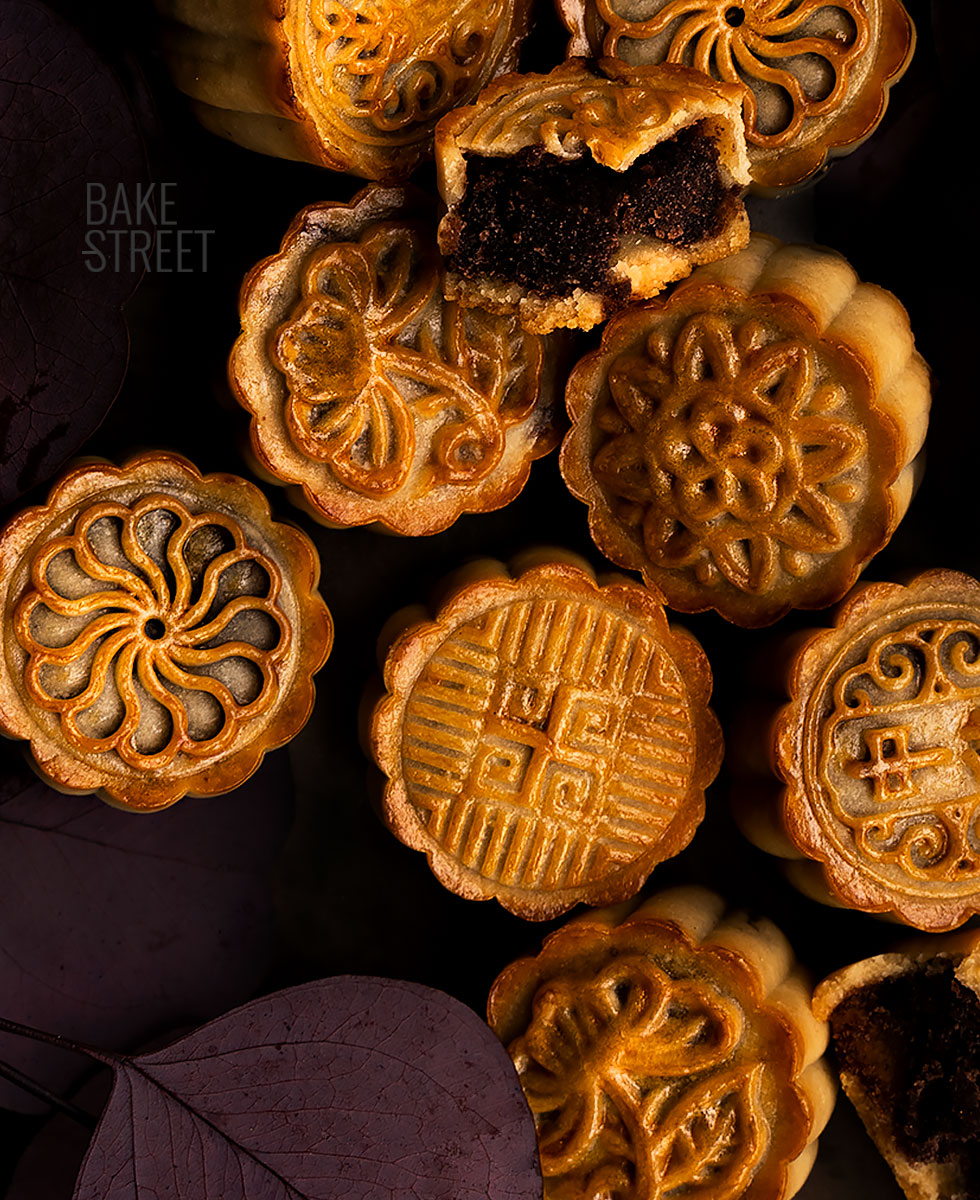
Beyond their religious and folkloric significance, mooncakes represent family reunions and happiness in Chinese culture.
This symbolism has its origins in the tradition of Chinese families coming together to celebrate the Mid-Autumn Festival. Today, the gift of mooncakes during the Mid-Autumn Festival is an important tradition for businesses in China and East Asia.
It seems that mooncakes were instrumental in overthrowing the Mongol Yuan dynasty (1279 – 1368).
Zhu Yuanzhang, the founder of the later Ming dynasty, circulated the rumor that a dreaded plague was spreading and the only way to avoid contagion was to eat a particular mooncake. Hidden in the fillings were messages signaling the expected date for a national uprising. Not surprisingly, the date set was the fifteenth day of the eighth lunar month, the Chinese Mid-Autumn Festival.
Another legend has it that a secret message was encrypted in the auspicious characters on the cakes. Since the cakes are usually delivered in boxes of four, the message was undetectable until a piece of each of the four cakes was assembled.
Making mooncakes.
I am not going to deceive you, it is true that making the elements that compose it separately is simple (although in many cases, laborious), but to assemble them well is not easy. It requires a lot of skill and ability to cover the piece of filling without the thin outer layer cracking and maintaining the same thickness over the entire surface.
Not to mention the base which, ideally, should be the same thickness as the rest of the cake. Once we have done everything up to this step, the rest is easier. Shape with the mooncake mold and bake.
The baking process consists of several phases in which we must remove them from the oven; first to dry and harden and then to brush them with egg and make them acquire color.
Once the whole baking process has been carried out, we must let them cool completely on a rack. And we still have to wait a little longer…. They should be stored in an airtight container and left to stand for 1-2 days, although some recommend leaving them for 3-4 days.
The reason why they should rest is so that the outer layer of dough acquires the right texture. When they come out of the oven they are very firm and crispy, these should have a soft texture with a shiny, oily exterior.
This process is called “回油“, which means “bringing the oil to the surface“. Once we have reached this point, we can enjoy or preserve mooncakes for 2 weeks in the fridge.
Mooncakes recipe
Ingredients for 13 pieces
MOONCAKE DOUGH:
Recipe by Magic Ingredients
- 150 g pastry/Cake flour
- 75 g Golden Syrup (recipe below)
- 10 g lye water
- 35 g vegetable oil
- 1 g salt
- cornstarch for the mold
GOLDEN SYRUP:
- 300 g sugar
- 150 g water
- 30 g lemon juice
FILLING:
- anko or sweet red bean paste (link recipe)
FOR BRUSHING:
- 1 egg yolk + 15 g water
MATERIAL NEEDED:
- 1 rolling pin
- teflon sheet or cling film
- mooncake mold (mine is for 50 g cakes)
- tray
- silpat
- pastry brush
Instructions
Make Golden Syrup.
- In a medium pot, first pour the water and then add the sugar and lemon juice.
- Place over medium heat and bring to a boil. Do not stir at any time.
- Once it comes to a boil, reduce the heat to simmer.
- Leave until the mixture acquires a honey-colored tone. It will take about 30 minutes.
- Remove from heat and pour into a jar or container, let cool completely.
Make dough mooncakes.
- Mix golden syrup with lye/alkaline water and vegetable oil. It will be a little difficult at the beginning, but in the end all the ingredients will integrate smoothly.
- Transfer the mixture to a larger bowl and add the sifted flour and salt.
- Mix with the help of a spatula until we get an amalgamated dough.
- Knead for 2-3 minutes until completely homogenized.
- Cover with plastic wrap and let it rest for 1-2 hours.
Assdemble mooncakes.
- Divide the mooncake dough into 20 g portions to obtain 13 units. Cover with plastic wrap or store in a covered container to prevent them from drying out.
- For the filling we will use anko (I left the recipe a few days ago). Shape 13 round pieces of 25-30 g. Cover with film or keep in a covered container to prevent them from drying out.
- Take one of the pieces of dough, place it between a Teflon sheet and stretch it with a rolling pin. We must give enough diameter to cover the piece of anko.
- Place the stretched dough on a piece of anko and adjust carefully. We begin to join the base until it is completely sealed. Gently roll and cover with film.
- Repeat the same process with the rest of the pieces.
Create the pattern with the mold.
- Roll one piece over a bowl with cornstarch, remove the excess.
- Place on a tray lined with a silpat or baking paper.
- Put the mooncake mold over the piece and press it with force 2-3 times.
- Remove the mooncake from the mold, pressing down in the same way as if we were going to mark the cake and place it on the tray.
- Repeat the same process with the rest of the pieces.

Bake mooncakes.
- Preheat oven to 355ºF/180ºC with heat up and down.
- Remove any excess cornstarch from the moon cakes, using a pastry brush.
- Spray the surface with water and place in the oven at medium heat. Bake for 5 minutes.
- Remove the mooncakes from the oven and let them cool for 4-5 minutes. In the meantime, mix 1 egg yolk with 15 g of water.
- With the help of a pastry brush, better not silicone, brush a very thin layer of yolk on the surface of the mooncakes. Make sure there is no excess in the hollows.
- Reduce the temperature to 335ºF/170ºC and bake for 10 minutes.
- Remove the cakes from the oven, let stand for 2 minutes and brush another very thin layer on the cakes.
- Put them back in the oven for 5-10 minutes, they should have a nice golden color.
- Remove from the oven and let them cool completely on a wire rack.
- Once cooled, store in an airtight container and let stand for 1-2 days at room temperature. If it is very hot, it is best to store them in the refrigerator.
- Before serving, let them cool for 1-2 hours.

Notes for perfect Mooncakes
- Mooncakes can be made with an infinite number of fillings. In my case I leave you this option made with anko (recipe in this link).
- We must use alkaline water to make them for two reasons; it increases the alkalinity (pH) to neutralize the acid of the golden syrup and favors the Maillard reaction, responsible for making the crust acquire a nice golden color.
- If alkaline water is not available, a solution can be made at home with baking soda. The ratio would be 1 teaspoon of baking soda to 4 teaspoons of water. According to Elaine of the China Sichuan Food blog, using baking soda directly will result in a much less crispy and browned crust. She recommends baking the baking soda on a lined baking sheet at 248ºF/120°C for about 1 hour to make it a more potent alkaline ingredient. We should not touch it during the process to avoid skin irritation.
- It is very important to weigh both the dough and the filling. The combined weight of both cannot exceed the amount of dough that your mold can tolerate. In my case I have a 50 g mold.
- I have varied the amount of filling in some of them, from 30 to 25 g, and it makes the process much easier when forming and pressing them.
- When we make the fillings at home, we must make sure that they are dry. For that reason, we must heat dry our anko well. A wet filling can cause cracks in the crust due to evaporation.
- It is very important to remove the cornstarch from the top of the mooncakes to make sure they have a nice and perfect finish.
- It is not easy to assemble the mooncakes, in fact in my case I still require a lot of practice. But nothing we can't achieve with patience and perseverance.
- We must spray the mooncakes with a little water to prevent them from cracking during baking. We must not overdo it or we run the risk of spoiling the top pattern.
- The baking has several processes; during the first 5 minutes we fix the shape of the mooncake, in the second and third batch we brush with the yolk to give color to the cake and finish the baking.
- When we take the mooncakes out of the oven we will notice that the dough is very firm and hard, besides not having any shine. This is completely normal. Once they have cooled, we must let them rest inside an airtight container to help the crust become soft and shiny.
- We can keep them refrigerated for 2 weeks.
I can assure you that Mooncake is a sweet that surprises a lot. I have always found them to be beautiful cakes, but some fillings seemed unattractive to me. Like the one I leave you with red beans.
Now that I have made and tasted them, several times, I promise you that they are not only worth the time and effort to make them, but they are exquisite. The texture, the flavor, the aroma... Wonderful. Once the cakes rest and mature, they develop a magic that makes you fall in love with them. I can't express in words how incredible it is to enjoy one of these sweets. It is for that reason that I encourage you to make them, because I assure you that you will thank me for it.
I wish you a wonderful weekend!
Big hugs,
Eva
Sources: China Sichuan Food, Delishably, China Highlights

